
To summarize Pablo Picasso’s life as a man and an artist in a few paragraphs would be terribly reductive and useless. Hence in order to participate in the celebration of the great anniversary of 2023, that dedicated to the 50th anniversary from the death of one of the twentieth-century greatest icons, we have selected 10 works of art. The works were chosen from within our archive thanks to the worldwide collections that Scala represents. Ideally each work represents a stage in the artist’s life and offers us the cue to activate other paths, mostly visual, that help make up our brief guide.
Pablo Ruiz y Picasso was born on October 25th 1881, in Malaga, Spain, and died on April 8th 1973, in Mougins, France. His was a long life however it did not take long to establish himself as an indisputable genius. Art was his main focus, however his influence and insights will often be mentioned along with those of other notable figures of the 20th century, such as Albert Einstein for example. Picasso and Einstein both had a revolutionary concept of the spatial-temporal dimension. Well known are Picasso’s many loves and the numerous women who surrounded the artist, the various friends who were among the most original artists, musicians and intellectuals of the last century. Last but not least his passions for Spain and antiquity are also well documented.
During 2023 there will be more than 40 exhibitions and events celebrating the artistic legacy of Picasso, a symbol of human rights and freedom of expression.
indicated as the Blu period. As with the subsequent Pink period, Picasso focused on the use of monochrome. The reduction of the palette to only cold colors was not only an intimate and expressive choice it was also due to necessity as the artist was tremendous poor at the time. Picasso’s obsession with themes of human misery and social alienation reaches its peak in this painting.
Some interesting facts about this work:
The first X-rays taken in 1978 revealed an earlier work hidden beneath the surface of the painting. After several studies and research among the artist’s writings, art historian Marilyn McCully identified the painting underneath as Last Moments, a large-scale work that was thought to have been lost. The subject is a woman on her deathbed with a figure, presumably a priest, standing at the foot of the bed.
The provenance of this work and how it eventually reached Cleveland, is also noteworthy. The first buyer was Sebastià Junyent, who in 1904 in Barcelona bought this work along with The Old Jews directly from Picasso for 500 pesetas. The work then passed to well-known Ambroise Vollard and ended up in America before World War II. In 1937 it is reported to have been at the Rhode Island School of Design in Providence, Rhode Island, and in 1945 Jacques Seligmann & Co of New York sold it to the Cleveland Museum of Art, which now displays the work in its permanent collection.
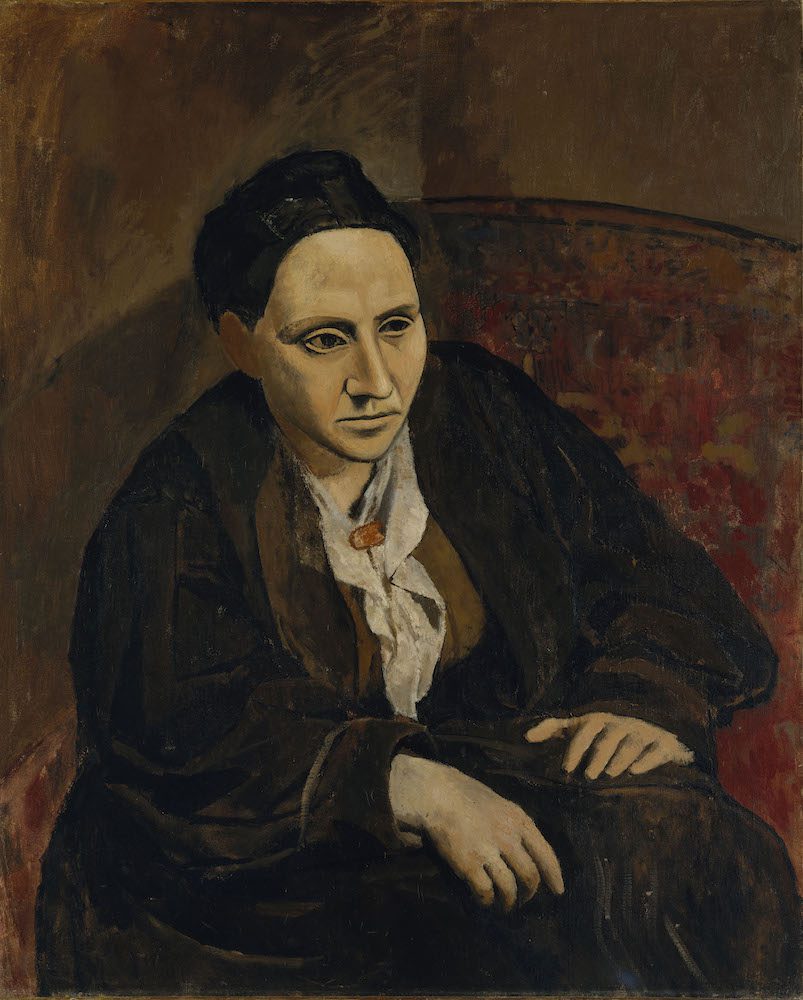
In this portrait Picasso has already arrived at cubism. It was 1905 when Gertrude Stein’s started sitting in the artist’s studio for the portrait. The sittings became a tremendously large number, more than 90! Ironically, however, the first painting was later destroyed and made again in the fall of the following year without even meeting the woman. In the work Stein’s face resembles an archaic mask which was what Picasso was studying during his summer stay in Gósol, Spain.
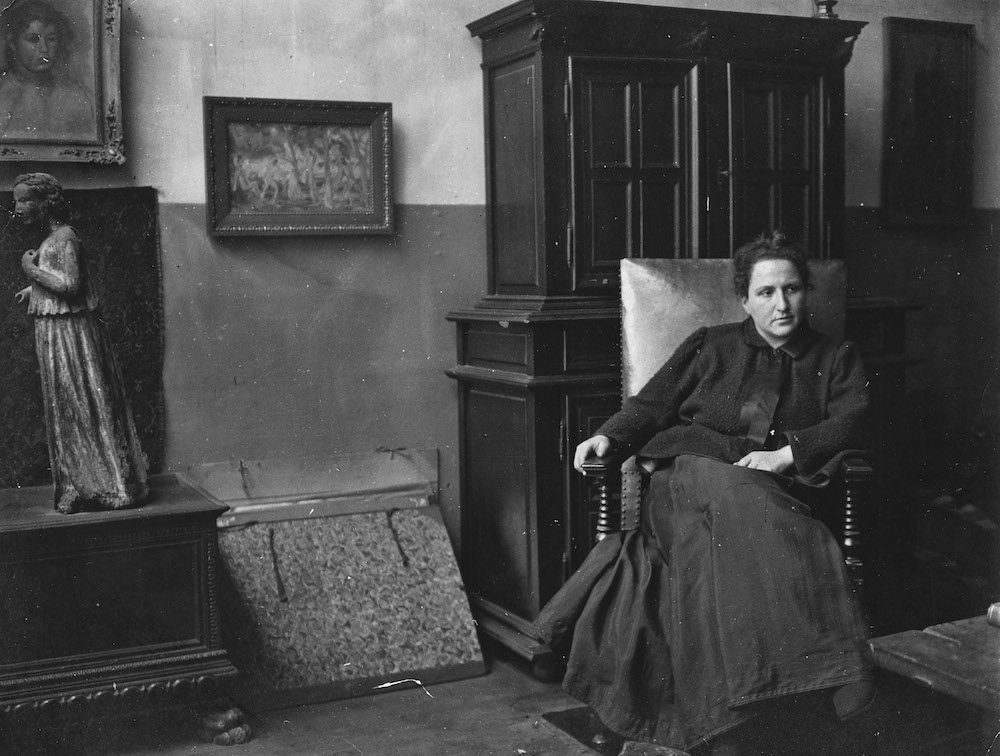
Gertrude Stein was a friend, collector and first patron of the young Spanish painter, she was also the soul of the Parisian Salon at 27 rue de Fleurus. Gertrude, who arrived from the United States in 1902 together with her brother Leo, used to host artists and intellectuals such as Cézanne, Renoir, Toulouse-Lautrec, Matisse, Derain, Braque, Duchamp, Man Ray, Picabia, Francis Scott Key Fitzgerald, John Ernst Steinbeck, Thomas Stearns Eliot, Dos Passos, and Isadora Duncan every evening. Among them was also the emerging and fiery Picasso.
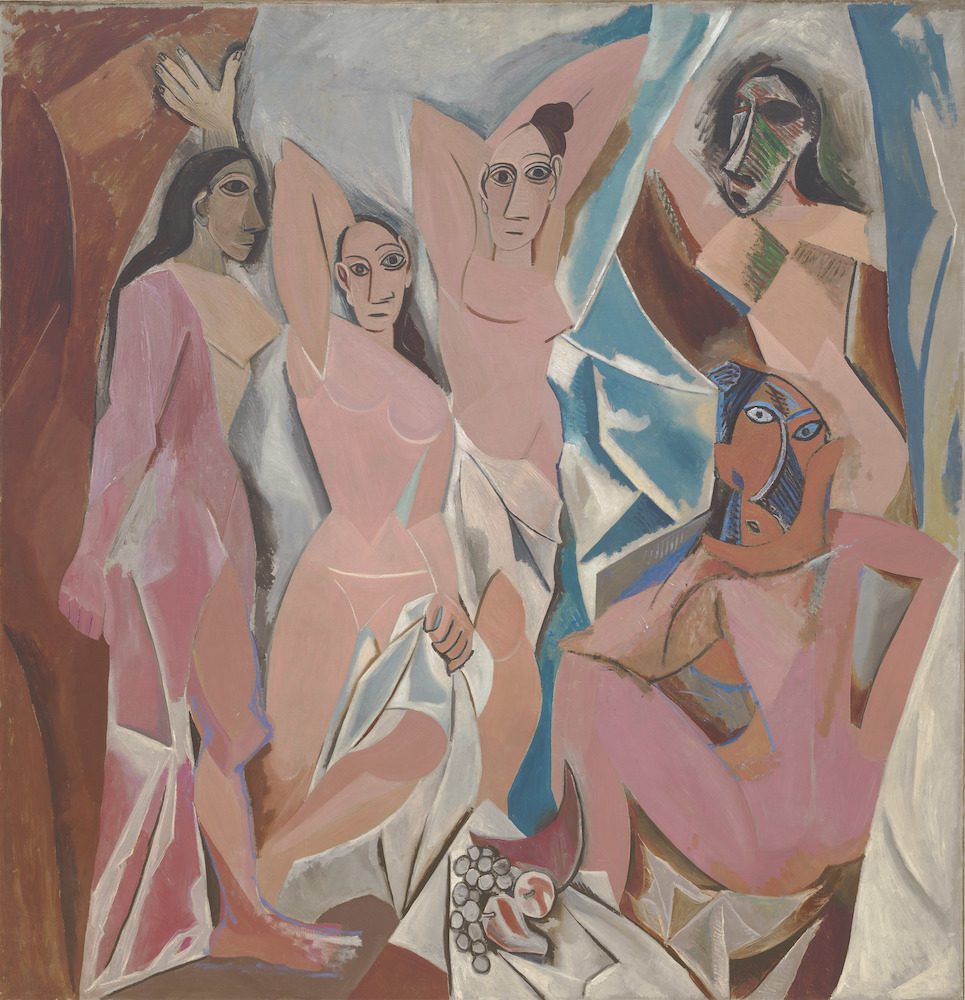
Considered the manifesto of Cubism, this work marks a radical break both in composition and subject from contemporary painting. Although it evokes “classical” nudes it is bold and provocative. No idealization of beauty, the women’s faces are masks (the same masks seen by the artist at the Musée d’Ethnographie du Trocadéro in Paris).
The title Les Demoiselles d’Avignon was given to the work at the time of its first public exhibition, at his own studio. Originally it was presented as Le bordel philosophique (the philosophical brothel). Avignon, in fact, is a reference to a street in Barcelona famous for its brothels.
This famous work has been at MoMA New York since 1939, when it was acquired thanks to the museum’s first director, the celebrated Alfred H. Barr, Jr.
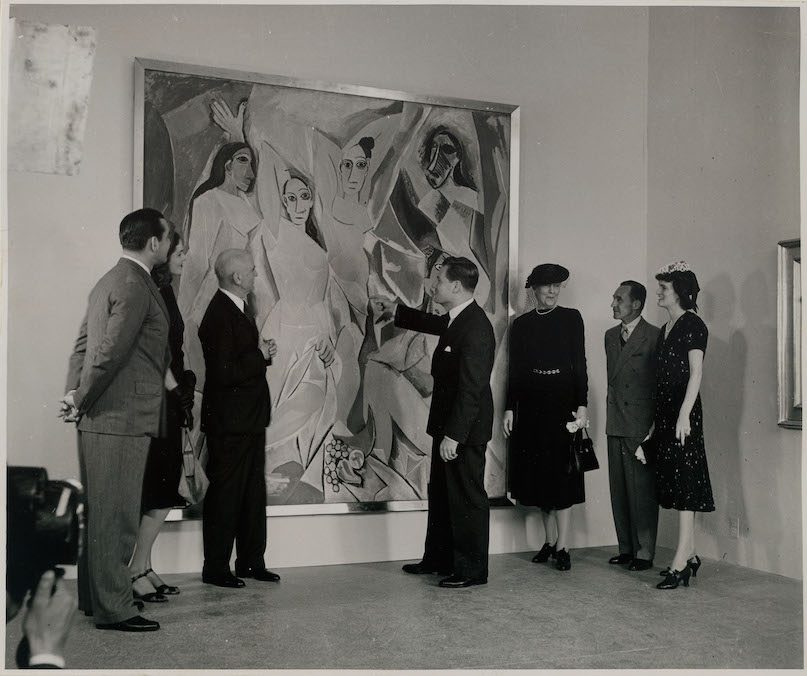
Scala is the exclusive worldwide agent for MoMA. Do you wish to learn more about this work through some audios? Check it out here or wish to obtain more images or history on the work and restoration? Let us know what you are looking for.
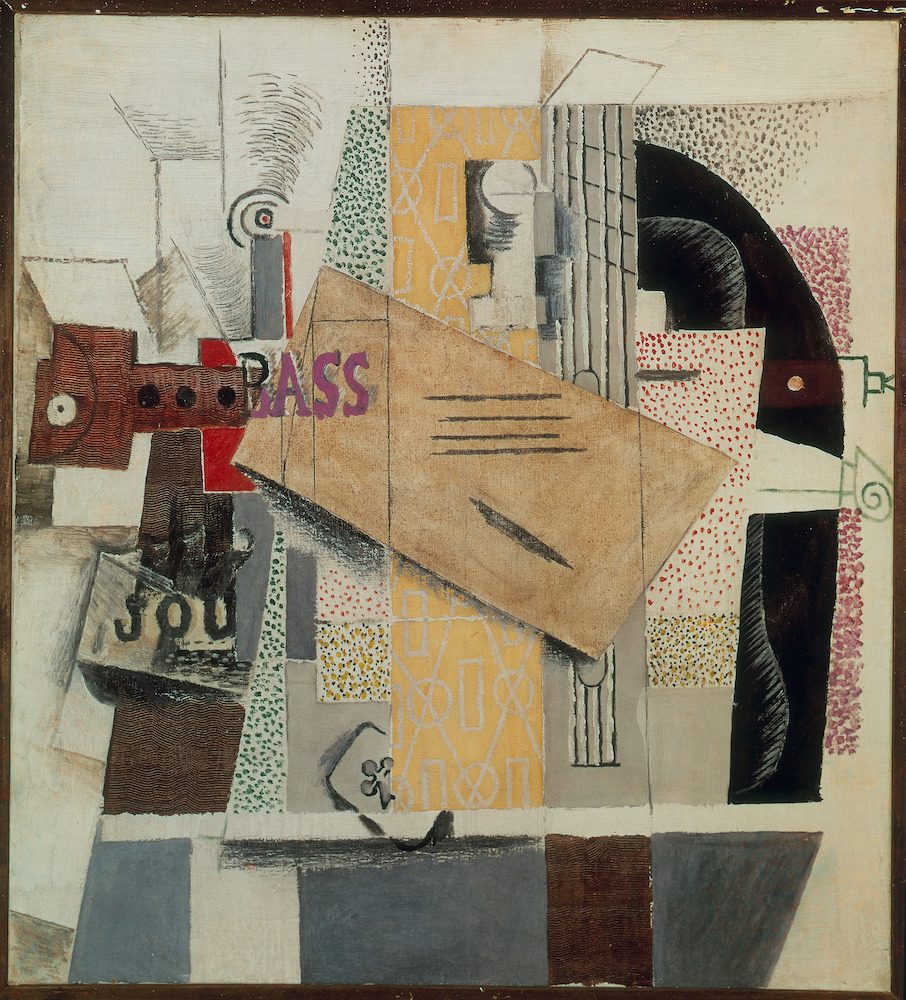
Among the subjects in the works of Analytic Cubism (1909-12) we often find musical instruments, in particular stringed ones such as violins, guitars and mandolins. It is well known that in this period Braque’s and Picasso’s collages are full of everyday objects, and as such the musical instruments are also evidence of the close friendships they had developed or were starting to develop with distinguished musicians such as Satie, Stravinski, Falla and Milhaud. Furthermore, the hollow body of these objects and the movement of the strings allow the artists to research volumes, the contrasts arising from different materials, and the movement of vibrations.
The Centre Pompidou in Paris holds several works by Braque and Picasso from this period; visit a selection from our archive. In Italy and the UK, Scala represents this museum as its official exclusive agent through RMN.
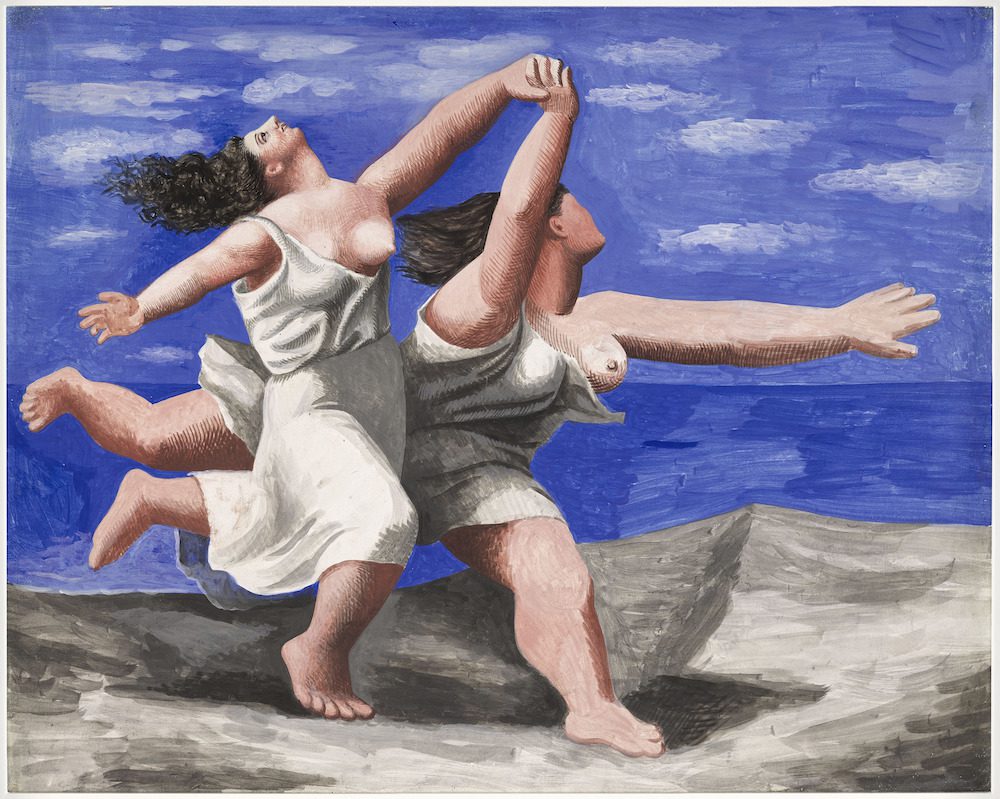
Picasso was a great observer, and a profound connoisseur of periods and styles. Picasso’s visit in 1917 to the ruins of Pompeii and Herculaneum, as well as the Archaeological Museum in Naples, had a profound influence on his creations of the early 1920s, aptly known as his neo-classical period. Antiquity will be a constant interest in his life. After the war (WWI) the artist’s canvases became crowded with colossal figures.
A visit to the exhibition Dessins du XVIème siècle while vacationing in Fontainebleau in the summer of 1921 was a contributing source of inspiration for this work. The exhibition featured works from Jean Masson’s private collection of Renaissance artists such as Primaticcio, Rosso Fiorentino, and Nicolo dell’Abate.
This work depicts two triumphant and sinuous women with flowing hair. The atmosphere is Mediterranean and the colors are vivid. There is a certain sense of fullness that leads to the joy of life, against war. Even the act of running is transformed and becomes a dance, perhaps inspired by the daily exercises of his wife Olga, a dancer. 1921 is also the year of the birth of his son Paulo and the happy event contributes to make this work a true hymn to the newfound joy of life.
Want to see more images from the Musée Picasso? Here is a selection. In Italy and the UK, Scala represents this museum as its official exclusive agent through RMN.
In June 1930, Picasso bought the castle of Boisgeloup, near Gisors in Normandy, and turned the stables into his studio. The huge space available allowed him to experiment more decisively with sculpture, including works in large-format. The Boisgelup period is marked by the marriage crisis with Olga, from whom he will officially separate in 1936 and to whom he will leave the property, and by his love for Marie-Thérèse Walter, by whom Picasso will have a daughter, Maia, in the fall of 1935.
Many of the sculptural works of this period depict Marie-Thérèse. This portrait depicts her as a fertility goddess. The most immediate references are the prehistoric depiction of the Venus de Lespugue and an African mask of the goddess Nimba.
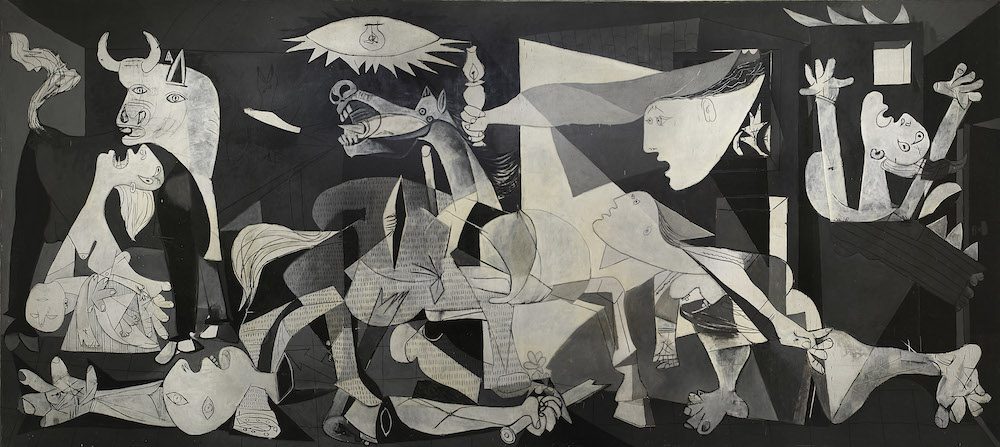
Guernica is without a doubt Pablo Picasso’s most iconic work. The canvas is part of the Museo Reina Sofía in Madrid and its’ dimensions (3.5×7.8m) are in line with those of a mural. It is known for its political message and reference to the Spanish Civil War.
Rather than a stylistic or thematic analysis it, therefore, seems more interesting to us to look into Guernica’s journeys leading to its final destination at the Reina Sofia museum.
Guernica was commissioned by the Spanish government to represent Spain at the Paris Expo of 1937. Picasso began working on it in the studio of rue des Grands Augustins soon after the bombing of the city of Guernica on April 27, 1937. It was finished in only 2 months and just in time to be exhibited at the Spanish Republic pavilion of the Paris Expo. Once the Expo was over, Guernica was put at the service of the Spanish Republic to support the Spanish Refugee Committee’s fundraisers through exhibitions in Scandinavia, England and many cities in the United States. In 1939, in order to prevent the work from being damaged, Picasso entrusted the painting to MoMA in New York, where it remained as if in “storage” for more than forty years at the artist’s own request.
The painting reappeared in Europe for the first time in 1953, in Milan, in a Picasso anti-war retrospective, which was followed by other exhibitions in Paris and Germany. In 1969 the Spanish government claimed it as state property, but Picasso stipulated that the painting would return only after the end of the dictatorship. Once Franco had died, the Spanish government proceeded with the request to bring Guernica back to Spain. Success was obtained also thanks to a receipt of 150,000 francs that showed it had been commissioned by the government itself. The work was exhibited first at the Casón del Buen Retiro, which belongs to the Museo Nacional del Prado, and from 1992 at the Museo Reina Sofía, as part of its permanent collection.
Recently deceased, María de la Concepción Ruiz-Picasso, nicknamed Maya, was the artist’s first daughter, born in 1935 from his union with Marie-Thérèse Walter. Depicted in many of Picasso’s works, here we find her as a child with a doll on her lap.
Despite his early estrangement from his first family, Picasso remained very close to his eldest daughter. For a long time Maya remained his confidante and the only one allowed into the studio at all hours, even at night when the artist preferred to paint.
Maya devoted much of her life to protect and make known the artist’s work: “Living with his works allowed me to be with him in the supernatural world he left us.”
Look at a gallery with more portraits of Pablo Picasso’s children
Among Pablo Picasso’s women, we like to focus on Dora Maar, because of her career as a photographer, which was often obfuscated by the Spanish artist with whom she had a tormented relationship between circa 1935 and 1944.
Born as Henriette Theodora Markovitch (1907-1997), Dora Maar was the daughter of a Croatian architect and a Parisian fashion entrepreneur and grew up between Buenos Aires and Paris. In Paris she developed a passion for photography, specializing in street photography. In the 1920s she met and frequented the Surrealists, getting close to Henri Cartier-Bresson, André Breton and Brassaï. She also had a very close relationship with Man Ray, for whom she modelled. Her photo shots were shown in the surrealists’ exhibitions, however, her meeting with Picasso distanced her from her own talent. After her relationship with the artist, in fact, she abandoned the camera forever, and approached painting; but the approach was in a much more shy and reserved manner compared to photography.
Look at a selection of Dora Maar’s signature photo shots here
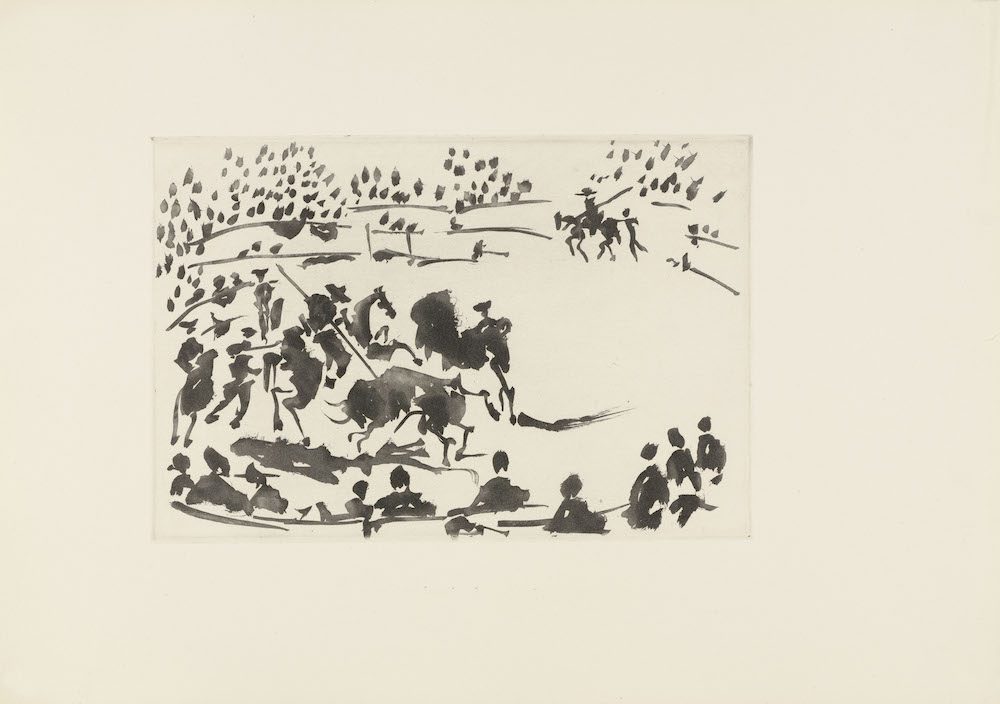
The Bull, symbol of the artist’s homeland, is a recurring iconography throughout Pablo Picasso’s oeuvre. In the Tauromachy, as well as in the Minotauromachy, however, it is the bull’s movement that is the focus. The movement becomes almost a dance, as can be seen in this series of etchings dedicated to the Tauromachy from the late 1950s.
During this artistic period Picasso is dedicated to reinterpreting the art of the masters, as is evidenced by a series of works inspired by Velazquez’s painting Las Meninas, and evidenced by the Tauromachy inspired by Goya. The period coincides in part with the artist’s move to Villa La Californie near Cannes, France, between 1955 and 1961.
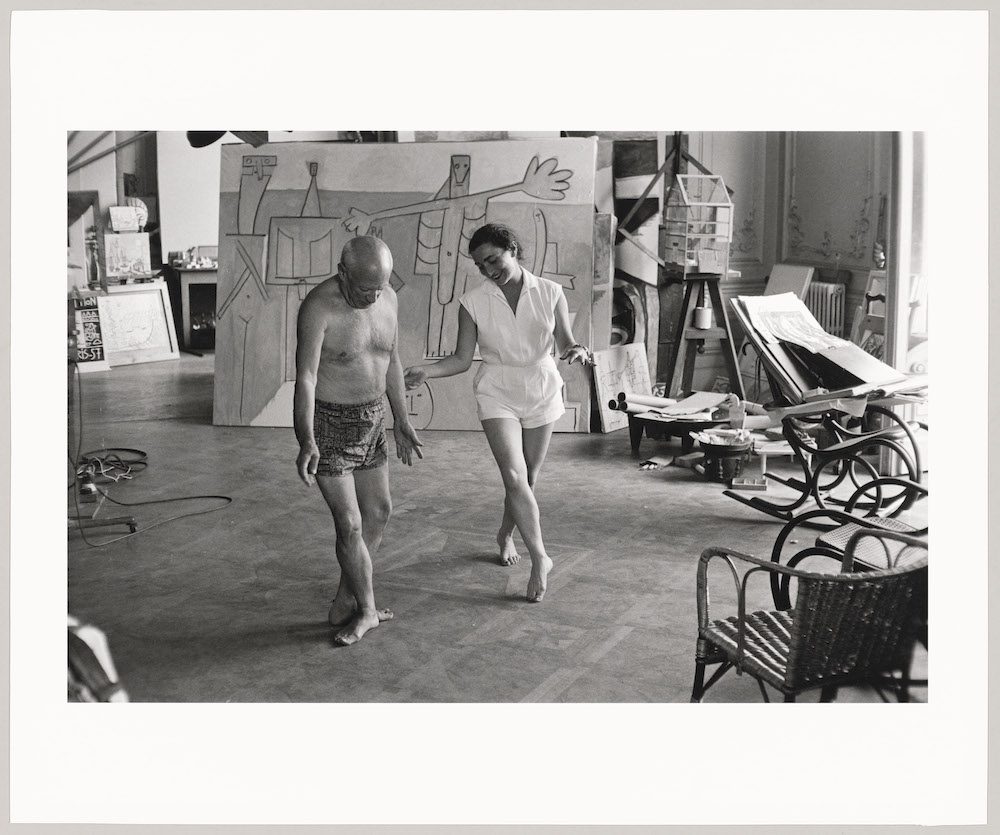
Look through this gallery for a glimpse into the atelier at Villa La Californie
Pablo Picasso’s works can be found in the world’s most important museum and private collections. If you didn’t find the images you are looking for in this blogpost or in the associated galleries, you can search further in our website or contact us for a more targeted and detailed search – Since not all the images available are online, we will be happy to search for you offline as well.
****
Cover: Halasz Gyula Brassaï (1899-1984), Picasso at the Café de Flore, on his left Jame Sabartés his friend and secretary, 1939